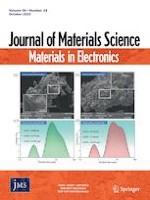01.10.2023
Electrodeposited NiCoO2@CNTs fiber as efficient counter electrode in wire-shaped dye-sensitized solar cells
Erschienen in: Journal of Materials Science: Materials in Electronics | Ausgabe 28/2023
EinloggenAktivieren Sie unsere intelligente Suche, um passende Fachinhalte oder Patente zu finden.
Wählen Sie Textabschnitte aus um mit Künstlicher Intelligenz passenden Patente zu finden. powered by
Markieren Sie Textabschnitte, um KI-gestützt weitere passende Inhalte zu finden. powered by
